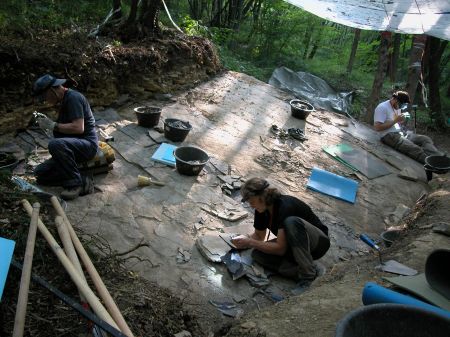Cantonal museum
Museo cantonale di storia naturale di Lugano
Since 2006, the Museo cantonale di storia naturale di Lugano has undertaken new excavations in the Meride Limestone, more precisely in the Cassina beds, Kalkschieferzone and Sceltrich beds. The latter is a newly discovered fossiliferous level at the base of the upper Meride limestone not studied previously, which is particularly rich in fish, invertebrates and plant remains.
The new excavations have been carried out through the collaboration of several academic institutions, and museums in Switzerland and abroad, as part of a specific research platform that has resulted in a formal cooperation among these institutions. Currently, the Museo cantonale di storia naturale di Lugano holds a dual role of research study, while simultaneously coordinating integrated scientific research (geochronological, biostratigraphic, sedimentological) on the entire Middle Triassic section.
In addition to the study of new fossils that have emerged from the excavations (vertebrates, invertebrates, plants), research has focused more specifically on the absolute geochronology of the Meride Limestone, stable isotope geochemistry, pelagic (radiolarians) and benthic (foraminifera) micropalaeontology, palynology, and palynofacies (pollen, spores and other organic remains).
The museum also offers students from the University of Insubria (at Varese and Como) the possibility of conducting training courses, bachelor's, and master's work on vertebrate palaeontology as part of a signed convention agreed between the two institutions.
www4.ti.ch/dt/da/mcsn/temi/mcsn/il-museo/monte-san-giorgio/pubblicazioni-scientifiche/2017/
Excavation of the Museo cantonale di storia naturale di Lugano at Sceltrich, 2013






